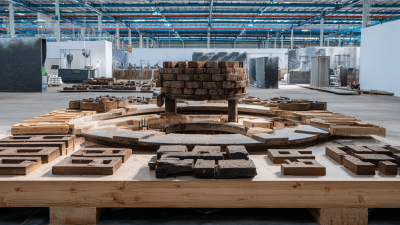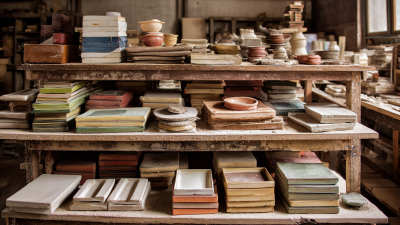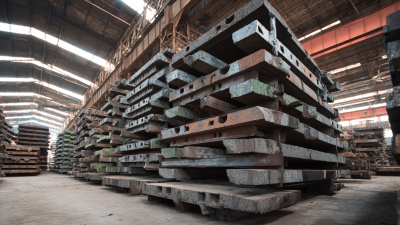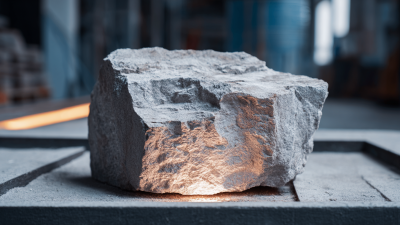Leave Your Message
In the realm of modern ceramics production, the significance of kiln furniture cannot be overstated. As the industry evolves, particularly with the rise of advanced manufacturing techniques and materials, kiln furniture plays a pivotal role in optimizing the firing process and improving product quality. According to a report by the Ceramics Industry Association, approximately 30% of production failures can be attributed to inadequate support and positioning of ceramic items during firing, highlighting the essential function of kiln furniture in maintaining structural integrity and uniform heat distribution.

Its strategic design not only enhances the efficiency of kiln operations but also mitigates risks of contamination and defects in finished goods. As ceramic manufacturers increasingly focus on sustainability and cost-effectiveness, innovative kiln furniture solutions are emerging as a crucial element in the quest for greater productivity and excellence in the modern ceramics landscape.
Kiln furniture plays a crucial role in modern ceramics production techniques, significantly enhancing production efficiency. This essential component includes items such as kiln shelves, posts, and props, which support and organize ceramic pieces during the firing process. By optimizing space within kilns, kiln furniture allows for a higher density of items to be fired simultaneously, leading to improved energy efficiency and reduced cycle times. The strategic arrangement of ceramics on kiln shelves also minimizes the risk of deformation and defects, ensuring that end products meet quality standards.

Moreover, choosing the right kiln furniture helps in achieving uniform heating within the kiln. Different materials used for kiln furniture can withstand high temperatures while providing excellent thermal stability, which is vital for avoiding thermal shocks that can lead to breakage. Enhanced heat distribution not only leads to better firing results but also contributes to resource conservation by reducing energy consumption. Ultimately, the thoughtful integration of kiln furniture into production processes not only elevates the efficiency of ceramics manufacturing but also supports sustainable practices in the industry.
Kiln furniture plays a critical role in modern ceramics production, influencing both the efficiency of the firing process and the overall quality of the final product. The material composition of kiln furniture, including high purity mullite and other advanced ceramics, significantly impacts its temperature resistance and longevity. As the demand for high-performance ceramics grows across various industries, the choice of materials for kiln furniture becomes increasingly vital.
Recent trends indicate a rising interest in high purity mullite powder due to its exceptional thermal stability and low expansion characteristics. This shift not only enhances the durability of kiln furniture but also supports high-temperature applications, where traditional materials might fail. By optimizing the material composition of kiln furniture, manufacturers can ensure consistent firing conditions and minimize defects in ceramic products, ultimately leading to improved output quality and reduced production costs. As innovation in ceramic technology progresses, the importance of carefully selected materials for kiln furniture cannot be understated, driving advancements in manufacturing practices.
This chart illustrates the temperature resistance of various materials used in kiln furniture. Understanding the material composition is crucial for optimizing temperature performance and longevity in modern ceramics production techniques.
Innovations in kiln furniture design have become crucial in enhancing the stability of modern ceramics production. Traditional kiln furniture often faced challenges such as warping and breakage under high temperatures, which could lead to defects in ceramic products. However, advancements in materials science have led to the development of more resilient and heat-resistant kiln furniture. This includes the use of advanced ceramics and composite materials, which not only provide better thermal stability but also reduce the overall weight of the kiln furniture, allowing for more efficient loading and unloading of pieces.
Furthermore, the integration of digital technologies in kiln furniture design has opened new avenues for optimizing firing processes. Systems equipped with sensors can monitor temperature variations and adjust the positioning of kiln furniture in real time, ensuring an even distribution of heat. This innovation significantly minimizes the risk of defects such as warping or cracking during firing. By enhancing the performance and reliability of kiln furniture, manufacturers can achieve higher quality ceramics, ultimately improving the overall efficiency of the production process.
The use of advanced kiln furniture in modern ceramics production not only enhances the efficiency of manufacturing processes but also offers substantial economic benefits. By investing in high-quality kiln furniture, manufacturers can improve the uniformity of heat distribution, resulting in higher product quality and reduced energy consumption during firing. This leads to decreased production costs while maximizing output, making advanced kiln furniture a pivotal factor in achieving competitive advantage within the ceramics industry.

Moreover, a multidimensional assessment of sustainability highlights that innovative kiln furniture contributes positively to the environmental footprint of ceramics production. By optimizing firing cycles and reducing waste, manufacturers can align with contemporary sustainability goals. This is particularly relevant given the rivalry between the ceramic tile and natural stone industries, where cost-effectiveness and ecological considerations drive purchasing decisions. Thus, the integration of advanced kiln furniture not only supports operational efficiency but also positions companies favorably in a market increasingly focused on sustainable practices.
The evolution of kiln furniture technology plays a pivotal role in advancing sustainable ceramics manufacturing. Traditional kiln furniture, such as props and shelves, is increasingly being replaced or supplemented with innovative materials that promote efficiency and reduce environmental impact. New developments in refractories and lightweight composites not only lower energy consumption during firing but also enhance the durability and longevity of the kiln furniture itself. These modern solutions enable manufacturers to reduce waste and optimize their production processes.
Moreover, adaptive solutions are emerging to meet the diverse needs of contemporary ceramics production. For instance, customizable kiln furniture designs allow for better space utilization within kilns, thus maximizing the firing capacity and ensuring uniform heat distribution. This adaptability not only leads to improved product quality but also reduces the overall carbon footprint of ceramics manufacturing.
As companies strive for sustainability, the integration of advanced kiln furniture technology becomes essential in achieving both operational efficiency and environmental responsibility.






